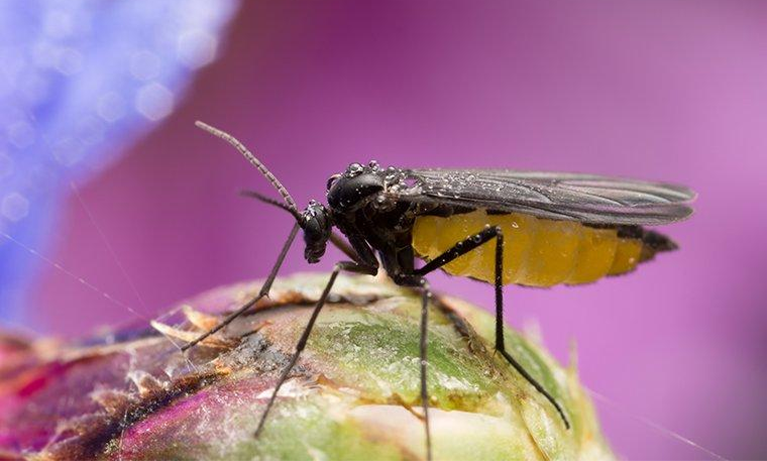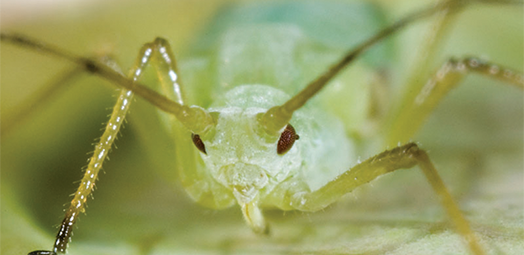
Fungus gnats are tiny but persistent pests that can wreak havoc in greenhouses. Here’s a closer look at their characteristics and management strategies to keep them under control.
- Fungus gnats primarily infest potted plants and continuously reproduce in greenhouses where warm temperatures are maintained, making them problematic in greenhouses during winter.
- Larvae or maggot fungus gnats cause the most damage to plants. Not only do they feed on fungi and decaying organic matter, but they also live on living plant tissue, causing wilting, yellowing, poor growth and foliage loss.
- Measuring about an 1/8” long, adult fungus gnats are slender, dark-colored, mosquito-like flies. They have long legs, antennae and one pair of wings.
- Adults live for 7 to 10 days and deposit eggs on soil surfaces or in soil cracks. Females lay up to 300 eggs in batches of 2 to 30. The eggs are shiny-white and semi-transparent, barely visible to the naked eye.
- Understanding their life cycle is key to effective management. Fungus gnats progress from eggs to larvae, pupae, and adults, with the larvae stage being the primary target for control measures.
Effective Fungus Gnat Control Strategies:
- Targeting Larvae and Adults:
- For the control of larvae and adult fungus gnats in moderate infestations, apply Enstar® AQ Insect Growth Regulator at 16 fl oz per 100 gallons of water per 20,000 sq ft or 24 ml (5 tsp) in 5 gallons per 1,000 sq ft, increase rate to 32 fl oz per 20,000 sq ft or 48 ml (3.5 tablespoons) per 5 gallons water per 1,000 sq ft for heavy infestations.
- Complete coverage of soil is essential for fungus gnat control.
- Apply Enstar® AQ Insect Growth Regulator for fungus gnat control before or after emergence of seedlings or on established production.
- Complete coverage of foliage is essential for control fungus gnats. For conventional spray equipment, mix the labeled amount of Enstar® AQ Insect Growth Regulator and water and spray both top and bottom surfaces of leaves until runoff. For other applications, follow the equipment manufacturer’s specifications.
- Cultural Practices:
- Avoid overwatering plants, as damp soil creates ideal breeding conditions for fungus gnats. Allow the soil's surface to dry out between waterings.
- Use sticky traps to monitor and capture adult gnats, reducing their numbers.
- Sanitation:
- Remove decaying plant material and clean growing areas regularly to reduce the organic matter that supports larval development.
- Biological Control:
- Consider introducing beneficial nematodes or predatory mites to target fungus gnat larvae naturally. These biological agents can complement chemical controls in an integrated pest management (IPM) approach.
By combining these management practices, growers can effectively control fungus gnat populations and minimize damage to plants, ensuring healthier ornamental plants year-round.

